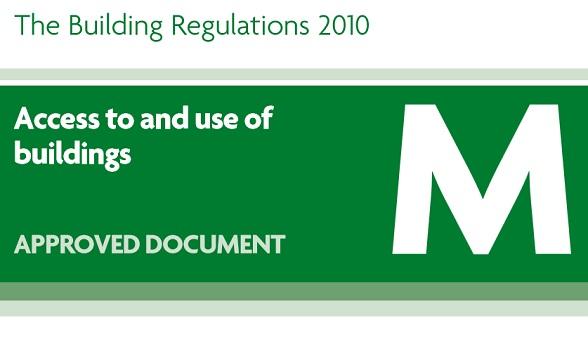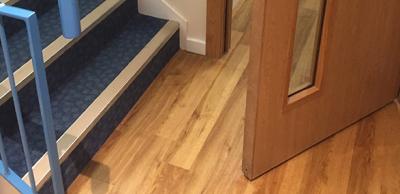Building Regulations Approved Document Part M in a Nutshell
Changes in 2015 to the Building Regulations Approved Document Part M, which contains guidance on access, introduced some new standards for new-build dwellings. The base standard is fairly similar to the old Part M; M4(2) is a higher standard that designs new dwellings so that they're more easily accessed and adapted should the need arise in future; M4(3) is fully wheelchair adaptable or accessible. The local planning authority will determine what standard of accessibility is required for each development as a condition of the planning permission.
If a local planning authority introduces one of these optional standards, you, as the developer, must inform building control that you’ll be meeting the higher level of requirements.
To help you plan and budget, here’s a simple roundup of the main differences between M4(1) (the basic standard) and M4(2) (the intermediate standard):
External differences
- All external doors must have a level threshold - the lower standard is just one door
- Approach routes must have a minimum clear width of 900mm or 750mm where there are obstructions, the gradient should be between 1:20 and 1:12
- Every gateway must have an 850mm clear opening, with a 300mm nib on the leading edge to allow users to reach the handle
- Parking spaces within the private curtilage of the dwelling (but not a car port or garage) must include at least one standard parking bay that can be widened at a later date to 3.3m
- Every principal entrance must have a cover(canopy, overhang or recess for example) with minimum width of 1200mm and depth of 900mm for communal entrances or a width of 900mm and depth of 600mm for private entrances. This can’t be a porch
- External doors must have an openable width of 850mm and have a 300mm nib on the leading edge (see diagram 2.2 ADM)
Internal differences
- Stairs must be a minimum width of 850mm to allow the future installation of a stair lift
- At least one bedroom must have a 750mm clear access zone from the foot of the bed and on both sides. Every other double bedroom will need a clear access zone on one side and the foot of the bed. Plans of furniture layouts in this case will need to be provided to show compliance (See diagram 2.4 ADM)
- All walls, ducts and boxings to the WC/cloakroom, bathroom and shower room should be strong enough to support grab rails, seats and other adaptations that could impose a load of up to 1.5kN/m2
- A bathroom must be located on every floor that has a bedroom
- Ground floor WC must have a hidden drainage connection and be large enough to accommodate a shower (see diagram 2.6 ADM)
- Consumer units must be mounted at a height between 1350mm and 1450mm above floor level
- Handles for windows, unless on a remote opening system, must be located between 450mm and 1400mm above floor level
There are lots of other new details to think about, so talk to your local authority building control team as early as possible to ensure your design will comply.
Find your local building control team
Further reading
Building Regulations Approved Document M (Dwellings)
Please Note: Every care was taken to ensure the information was correct at the time of publication. Any written guidance provided does not replace the user’s professional judgement. It is the responsibility of the dutyholder or person carrying out the work to ensure compliance with relevant building regulations or applicable technical standards.
This article was checked and updated on 18th March 2022
Sign up to the building bulletin newsletter
Over 48,000 construction professionals have already signed up for the LABC Building Bulletin.
Join them and receive useful tips, practical technical information and industry news by email once every 6 weeks.
Subscribe to the Building Bulletin




Comments
AD(M).V1 Section 2.14
Submitted 1 year 1 month ago
LABC Response
Submitted 1 year ago
Best,
LABC Team
Legal space of flat doors behind main front communal door.
Submitted 1 year ago
The angles of access the ground floor flat has is extremely difficult.. do not feel front access including who is at front door as only voice intercom not suitable for a disabled person's health and wellbeing for access, privacy and personal safety.
LABC Response
Submitted 10 months 2 weeks ago
Best,
LABC Team
Add new comment